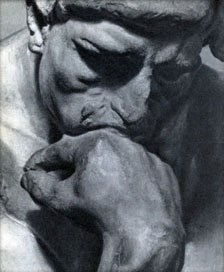Logical construction something built by logical operations from certain elements. Suppose that any sentence, S, containing terms apparently referring to objects of type F can be paraphrased without any essential loss of content into some (possibly much more complicated) sentence, Sp, containing only terms referring to objects of type G (distinct from F): in this case, objects of type F may be said to be logical constructions out of objects of type G. The notion originates with Russell’s concept of an ‘incomplete symbol,’ which he introduced in connection with his theory of descriptions. According to Russell, a definite description – i.e., a descriptive phrase, such as ‘the present king of France’, apparently picking out a unique object – cannot be taken at face value as a genuinely referential term. One reason for this is that the existence of the objects seemingly referred to by such phrases can be meaningfully denied. We can say, ‘The present king of France does not exist,’ and it is hard to see how this could be if ‘the present king of France’, to be meaningful, has to refer to the present king of France. One solution, advocated by Meinong, is to claim that the referents required by what ordinary grammar suggests are singular terms must have some kind of ‘being,’ even though this need not amount to actual existence; but this solution offended Russell’s ‘robust sense of reality.’ According to Russell, then, ‘The F is G’ is to be understood as equivalent to (something like) ‘One and only one thing Fs and that thing is G’. (The phrase ‘one and only one’ can itself be paraphrased away in terms of quantifiers and identity.) The crucial feature of this analysis is that it does not define the problematic phrases by providing synonyms: rather, it provides a rule, which Russell called ‘a definition in use,’ for paraphrasing whole sentences in which they occur into whole sentences in which they do not. This is why definite descriptions are ‘incomplete symbols’: we do not specify objects that are their meanings; we lay down a rule that explains the meaning of whole sentences in which they occur. Thus definite descriptions disappear under analysis, and with them the shadowy occupants of Meinong’s realm of being.
Russell thought that the kind of analysis represented by the theory of descriptions gives the clue to the proper method for philosophy: solve metaphysical and epistemological problems by reducing ontological commitments. The task of philosophy is to substitute, wherever possible, logical constructions for inferred entities. Thus in the philosophy of mathematics, Russell attempted to eliminate numbers, as a distinct category of objects, by showing how mathematical statements can be translated into (what he took to be) purely logical statements. But what really gave Russell’s program its bite was his thought that we can refer only to objects with which we are directly acquainted. This committed him to holding that all terms apparently referring to objects that cannot be regarded as objects of acquaintance should be given contextual definitions along the lines of the theory of descriptions: i.e., to treating everything beyond the scope of acquaintance as a logical construction (or a ‘logical fiction’). Most notably, Russell regarded physical objects as logical constructions out of sense-data, taking this to resolve the skeptical problem about our knowledge of the external world. The project of showing how physical objects can be treated as logical constructions out of sense-data was a major concern of analytical philosophers in the interwar period, Carnap’s Der Logische Aufbau der Welt (‘The Logical Structure of the World,’ 1928) standing as perhaps its major monument. However, the project was not a success. Even Carnap’s construction involves a system of space-time coordinates that is not analyzed in sense-datum terms and today few, if any, philosophers believe that such ambitious projects can be carried through. See also DEFINITION , REDUCTION , RUSSELL , SOCIAL CONSTRUCTIVISM , THEORY OF DE – SCRIPTION. M.W.
